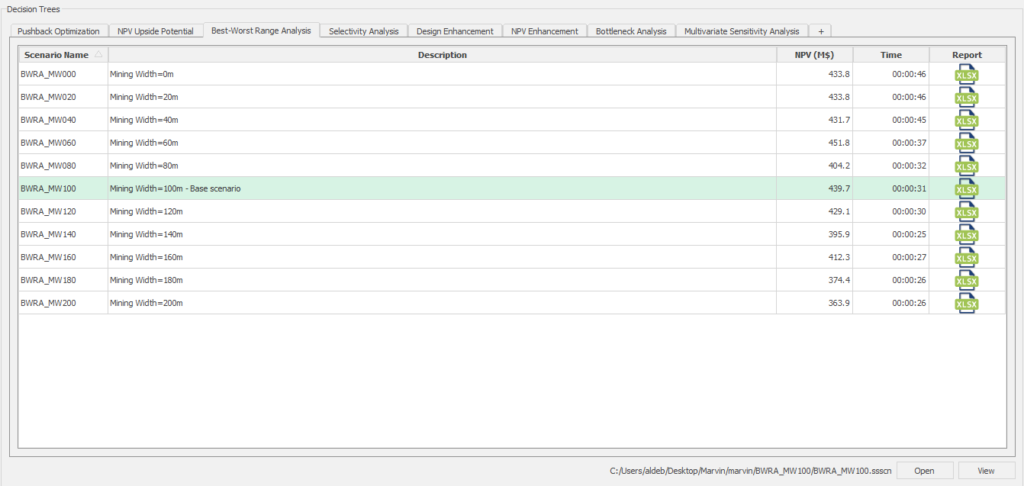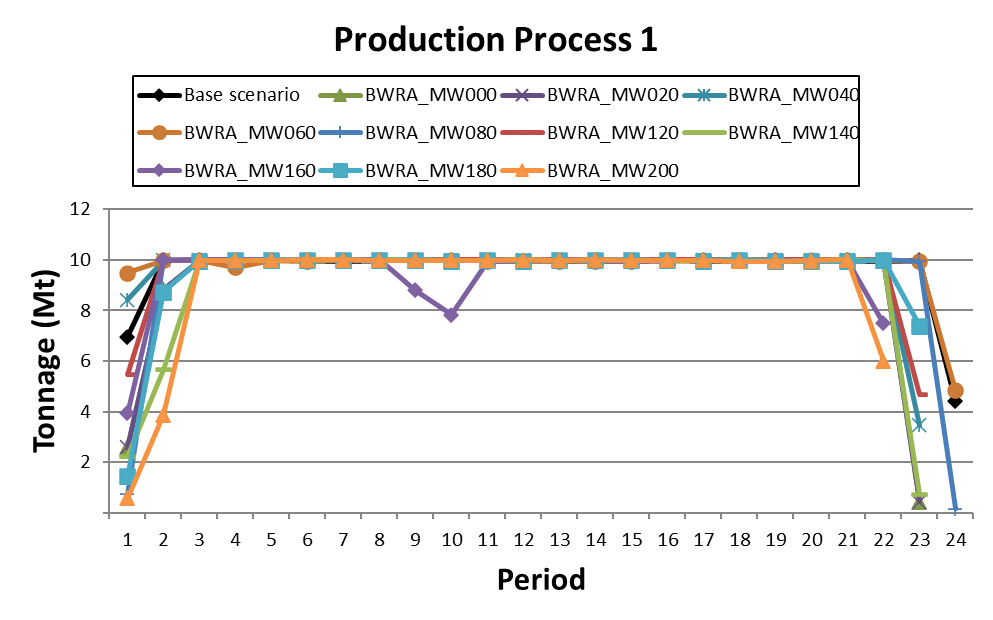Best-Worst Range Analysis
Highlights
Understanding how varying mine width constraints affect project outcomes is crucial for optimizing open-pit operations. This analysis provides insights into the trade-offs between operational flexibility and economic performance.
- Systematically evaluates the impact of mine width variations on net present value (NPV), aiding in identifying optimal operational parameters.
- Facilitates the creation of multiple scenarios with incremental mine width adjustments, enabling comprehensive sensitivity analysis.
- Utilizes MiningMath’s global optimization to assess a broad range of feasible solutions without the need for manual rework or stepwise processes.
Best-Worst Range Analysis is the process of generating and analyzing scenarios to measure the impact of mine width constraints on the project’s net present value (NPV), from no restriction to wide widths. Measuring the impact of mine width constraints is crucial to determine the optimal fleet equipment configuration in mining operations, with the aim of optimizing productivity and maximizing the net present value (NPV) of the project.
By analyzing variations in width constraints, it is possible to identify the effect of space limitations on mining operations and evaluate the influence of different bench widths on fleet performance. Appropriate mining widths can bring a series of benefits: higher amount of material to be simultaneously extracted; higher fleet productivity; more efficient transportation; easier road maintenance and so on. Hence, the search for different widths allows finding the best combination of equipment and mining techniques aimed at maximizing production and profit simultaneously in each scenario.
In a Best-Worst Range Analysis, scenarios are created gradually increasing the mine width up to a feasible maximum, allowing users to have a comprehensive view of the impact of space limitations on the project’s performance.
Considering the nature of global optimization and the non-linearity of the problem, it is expected that there will be variations in performance (NPV, production, amount of mine fronts, etc.) as parameter values are modified. Therefore, it is crucial to generate a large number of scenarios to obtain a comprehensive analysis of the impact of these variations on the project. This way, a more precise understanding of how different parameter values affect the overall performance can be achieved.
Example
Required dataset
Preinstalled Marvin deposit. It can also be downloaded here.
Consider the following base scenario and decision tree built for a Best-Worst Range Analysis using the Marvin dataset.
The goal in this case is to understand the impact of different values of mining width (in green), which will be tested with a range of different values, from 0m up to 200m.
Note that there is no linear relationship between mining width and NPV. In other words, a higher mining width does not necessarily imply a lower NPV. As previously mentioned, that is due to the non-linearity of the problem.
Considering the nature of global optimization employed in MiningMath, other variables might also be affected by different mining widths. For example, the production could be analyzed for identification of possible issues when employing different mining widths.







